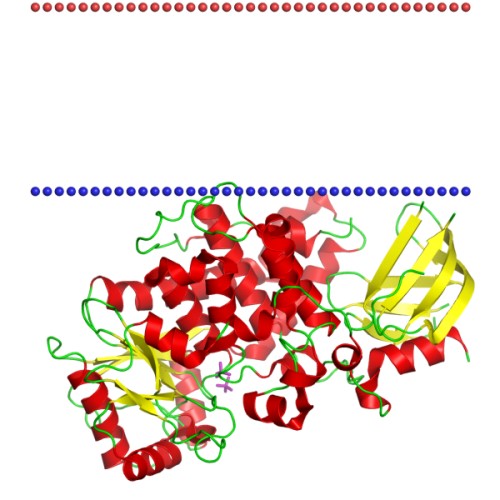Mempro™ Phosphotyrosine Protein Phosphatases II Production Using Virus-Like Particles
With the most advanced technologies, Creative Biostructure now can provide custom Mempro™ phosphotyrosine protein phosphatases II production using virus-like particles.
Members of phosphotyrosine protein phosphatases II superfamily play important roles in the regulation of protein tyrosines (pTrys) phosphorylation, which is an important post-translational modification (PTM). Phosphorylation of pTrys provides a novel recognizing motif for protein interactions and cellular localization. This PTM motif can widely affect many cellular functions such as cell cycling and growth, proliferation, differentiation and transformation. Phosphotyrosine protein phosphatases II superfamily contains five protein families: the dual specificity phosphatase-like family, the higher-molecular-weight phosphotyrosine protein phosphatases family, the myotubularin-like phosphatases family, the myo-inositol hexaphosphate phosphohydrolase (phytase) PhyA family and the Mycobacterial PtpB-like family. Tens of superfamily members have been identified from multiple species such as human, Norway rat, mouse and Selenomonas ruminantium.
 Figure 1. The schematic structure of Myotubularin-related protein 1 (OPM Database)
Figure 1. The schematic structure of Myotubularin-related protein 1 (OPM Database)
Virus-Like Particles (VLPs) can be described as viral "empty shells", they are highly organized subunits result from the self-assembly of viral core structural proteins. VLPs behave similar or the same with native virus in many ways, except that VLPs are non-infectious. All VLPs are lack of virus genomes. There is a long history for VLPs technologies being involved in multiple biological or medical research programs, such as vaccine development, antigen delivery, and heterologous epitope presentation. With the development of lipoparticles technique, VLPs now can also be applied for recombinant membrane protein productions. Many virus families have been used for the production of VLPs, including parvoviridae, bacteriophages, retroviridae, etc.
Creative Biostructure now can provide custom Mempro™ phosphotyrosine protein phosphatases II production service with our advanced VLPs technique. Our scientific team can produce VLPs from multiple host systems such as bacteria (E. coli), yeasts, green plants, insect cells and mammalian cells to meet different requirements. We will proceed the co-expressing of chosen viral core structural protein and target protein in the host cells. Expressed viral structural core protein will achieve the self-assembly within the plasmid membrane of host cells and form the VLPs. These VLPs then will bud-off from the plasmid membrane and form the specific lipoparticles (VLPs that that contain high concentration of specific membrane proteins within their construction) with the target phosphotyrosine protein phosphatases captured inside its construction. The lipoparticles then can be isolated from the surface of host cells. The VLPs technology has the advantage that the native structure and orientation of target inter-membrane proteins remain complete, as the whole process is out of mechanical disruptions and detergents.
Creative Biostructure can also provide a wide range of other Mempro™ membrane protein production service with various advanced techniques. Welcome to contact us for more details.
Reference:
Morona J K, Morona R, Miller D C, et al. Streptococcus pneumoniae capsule biosynthesis protein CpsB is a novel manganese-dependent phosphotyrosine-protein phosphatase[J]. Journal of bacteriology, 2002, 184(2): 577-583.
Caselli A, Chiarugi P, Camici G, et al. In vivo inactivation of phosphotyrosine protein phosphatases by nitric oxide[J]. FEBS letters, 1995, 374(2): 249-252.
A.Roldão, et al. Virus-like particles in vaccine development.Expert Rev. Vaccines, 2010,9(10): 1149-1176.
Feussner I, Wasternack C. The lipoxygenase pathway [J]. Annual review of plant biology, 2002, 53(1): 275-297.